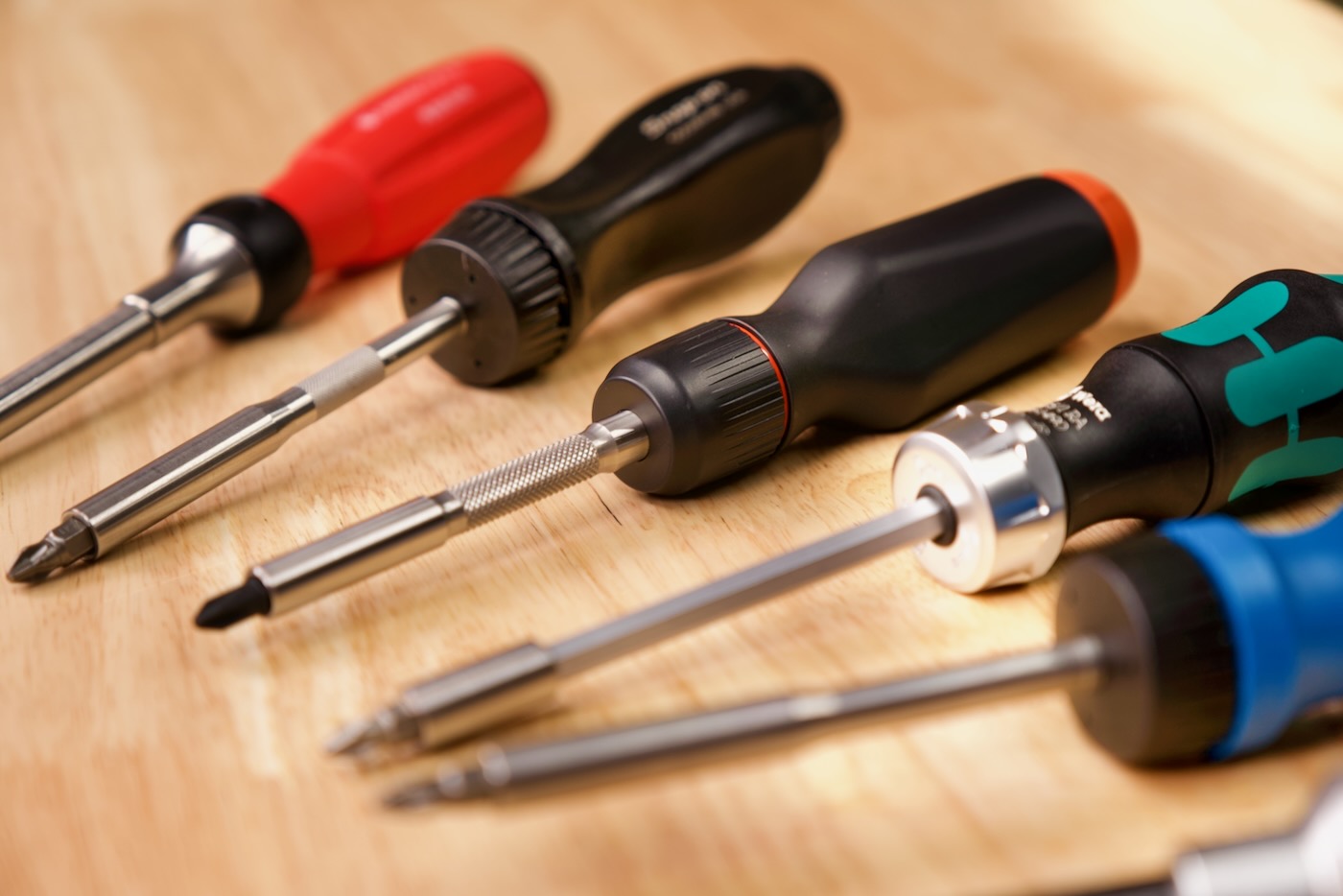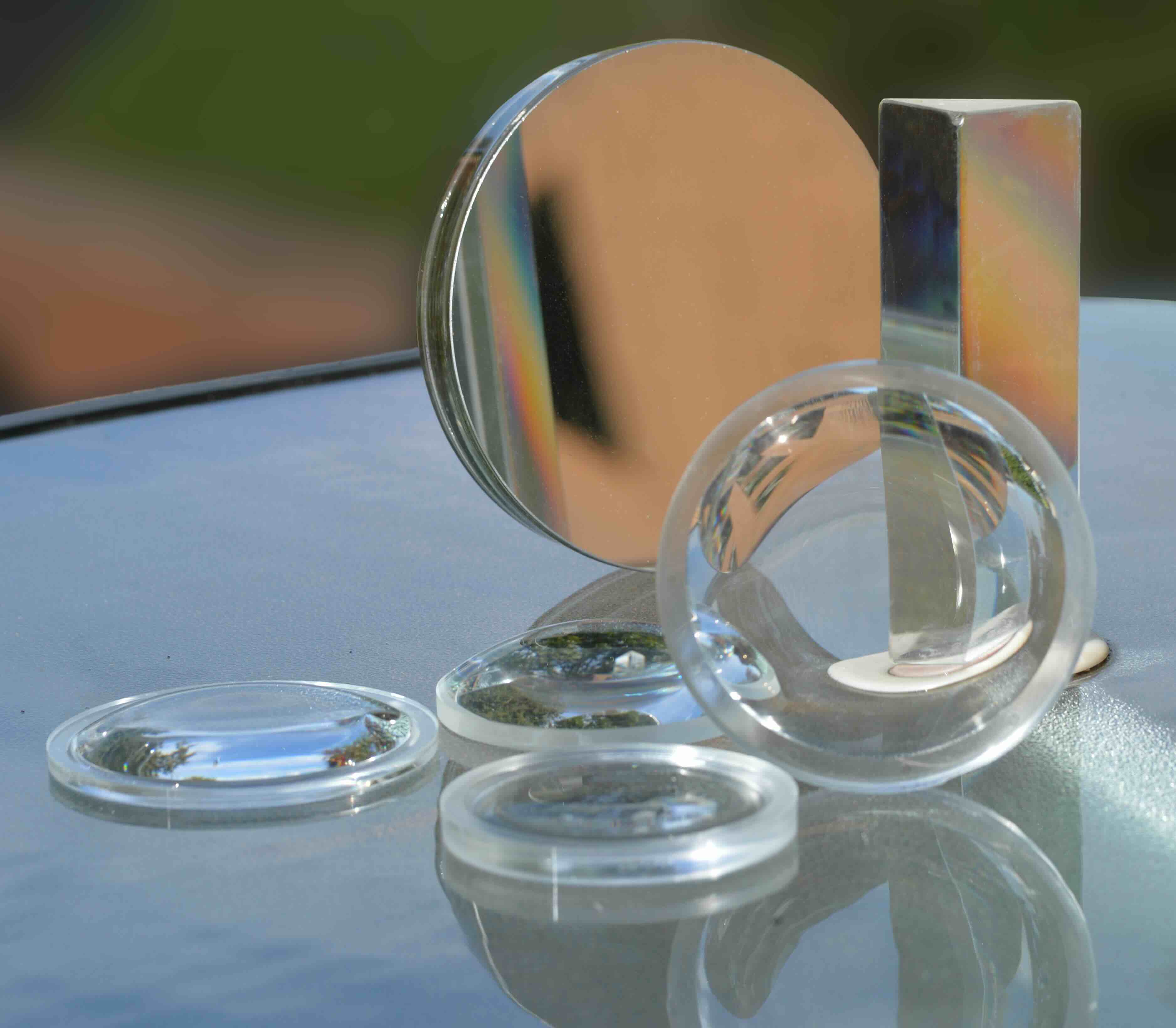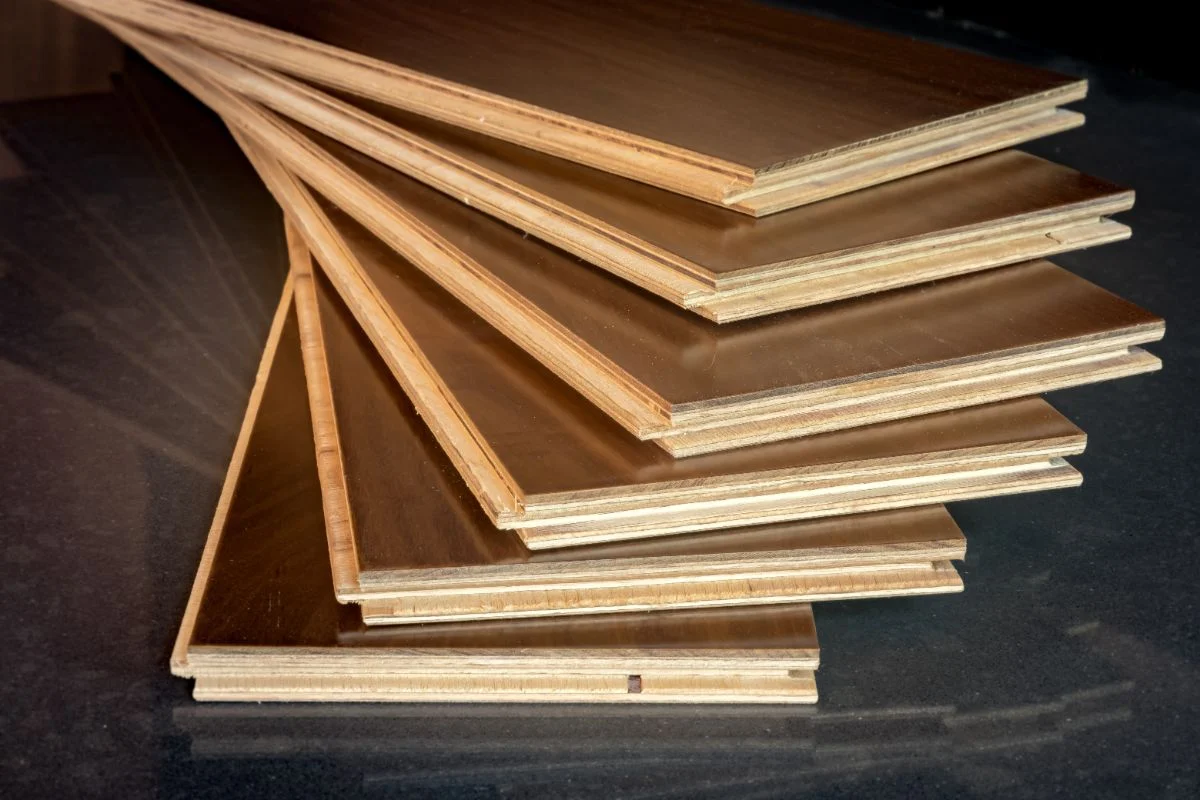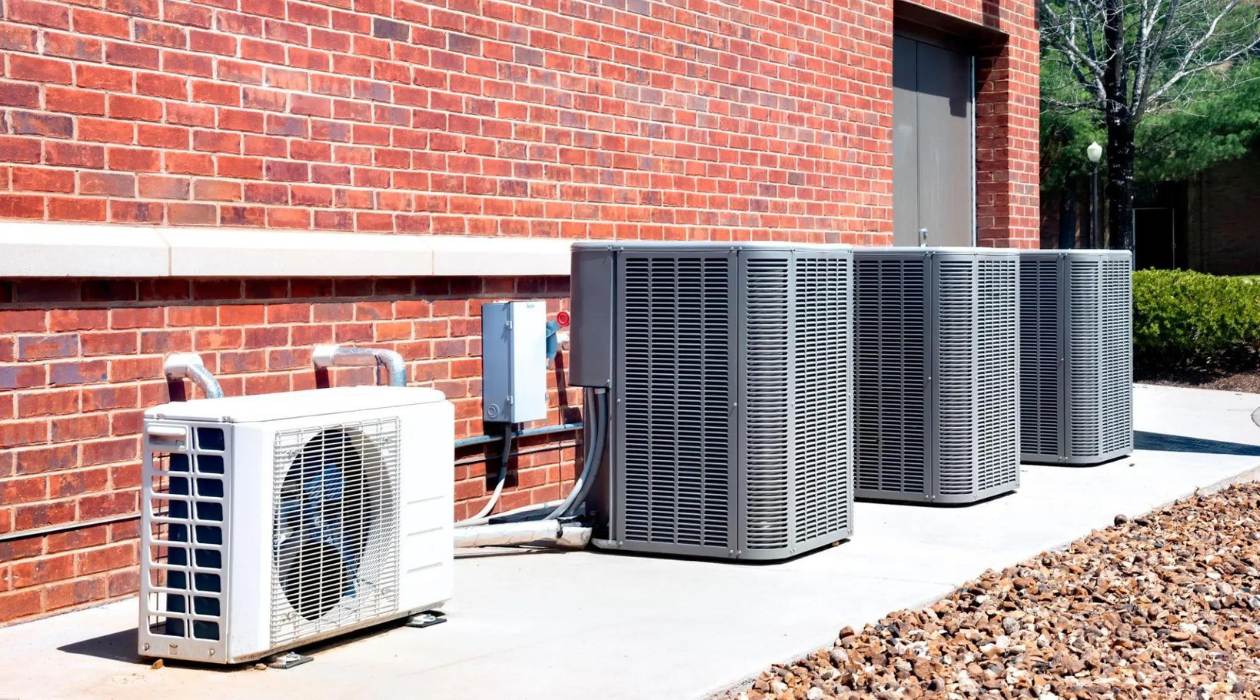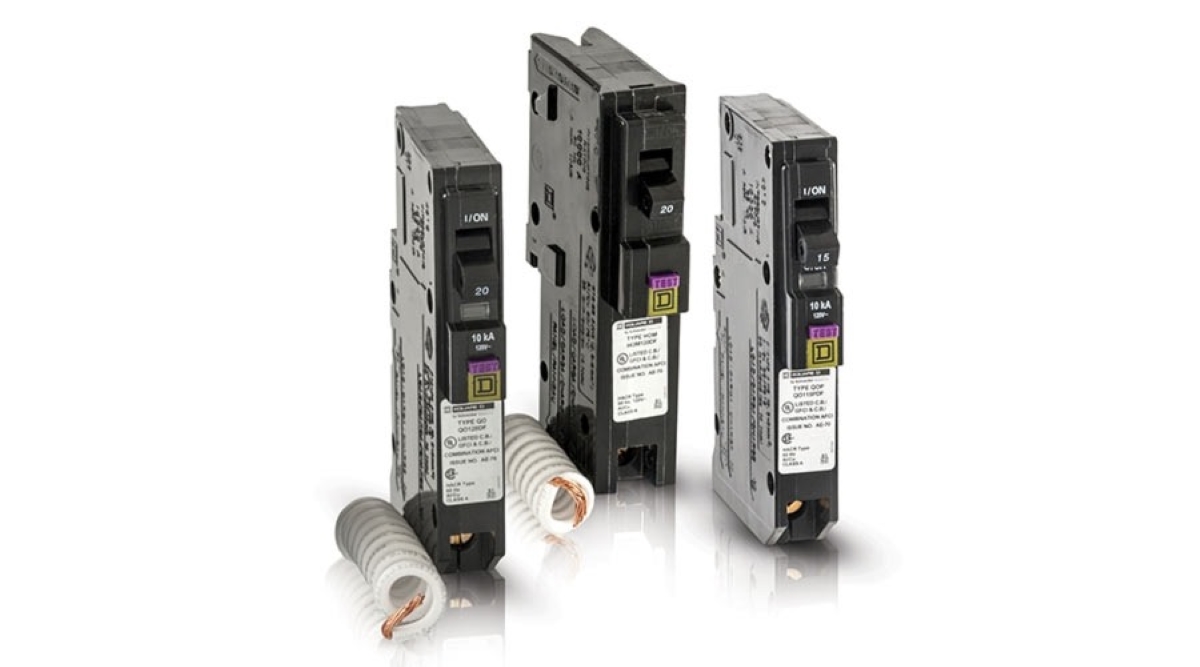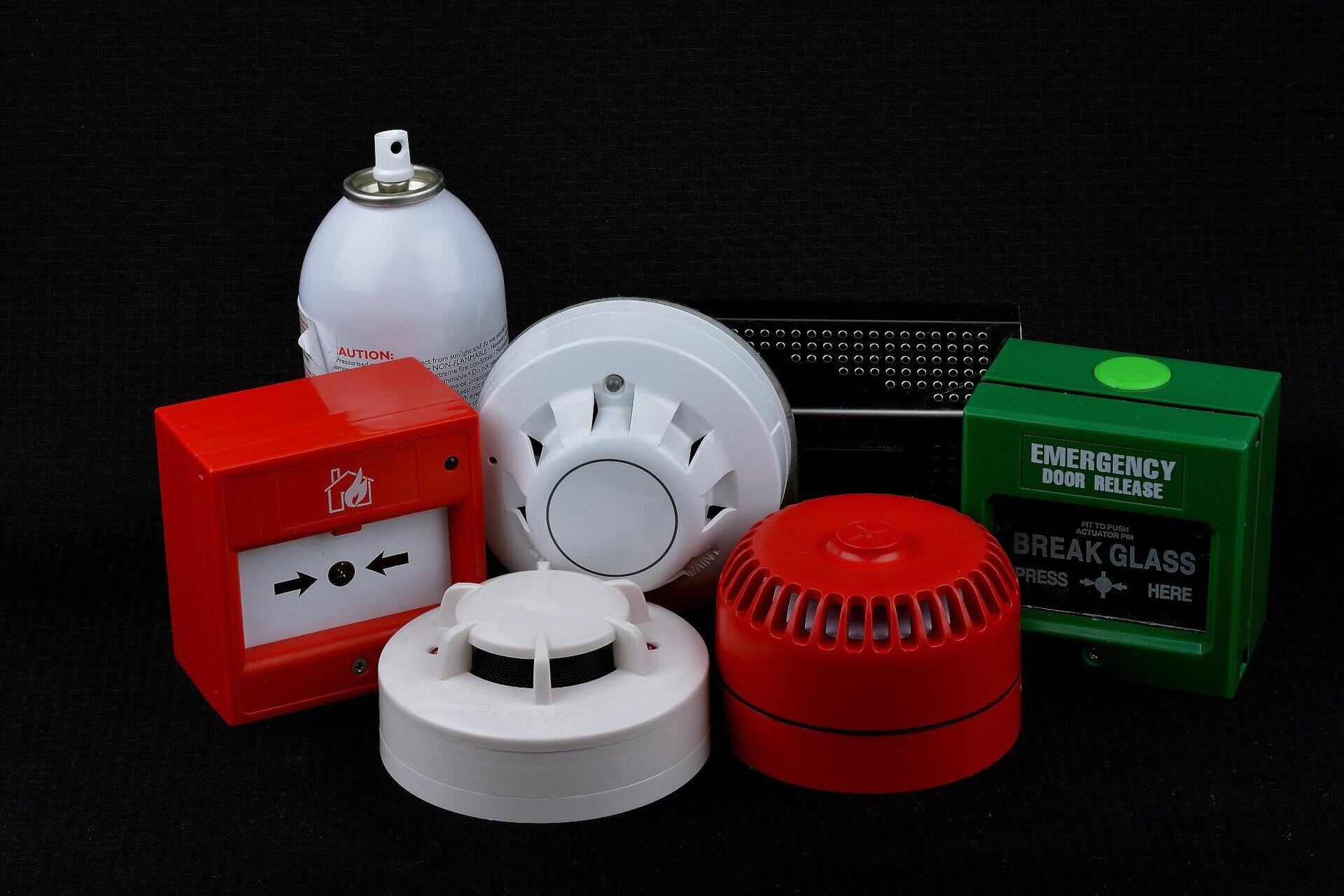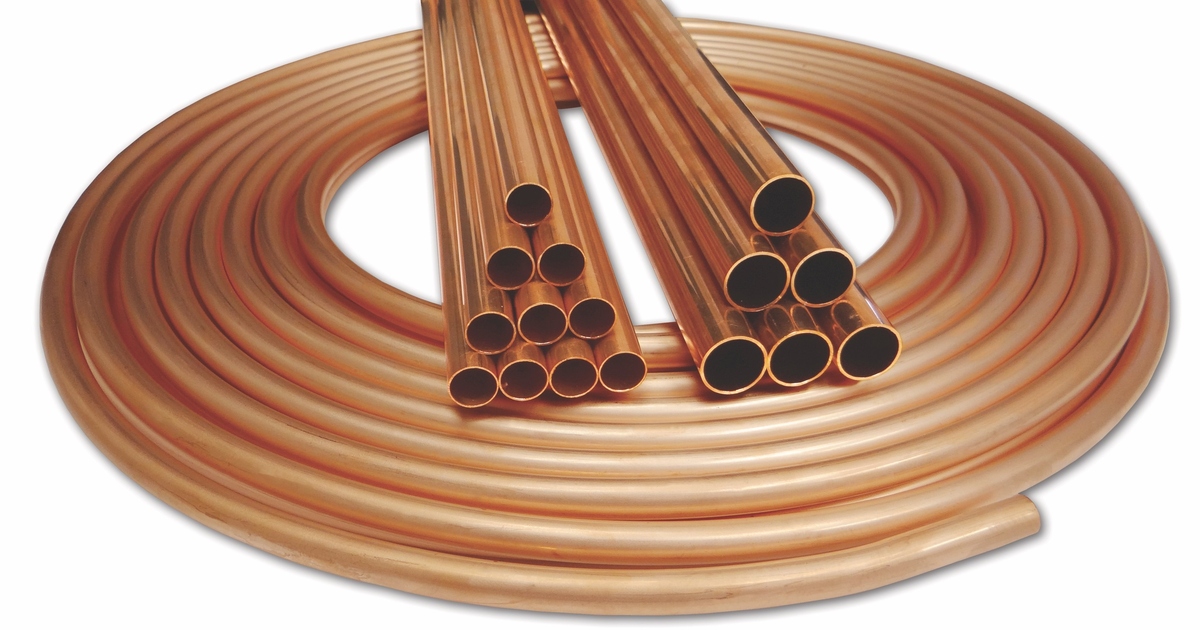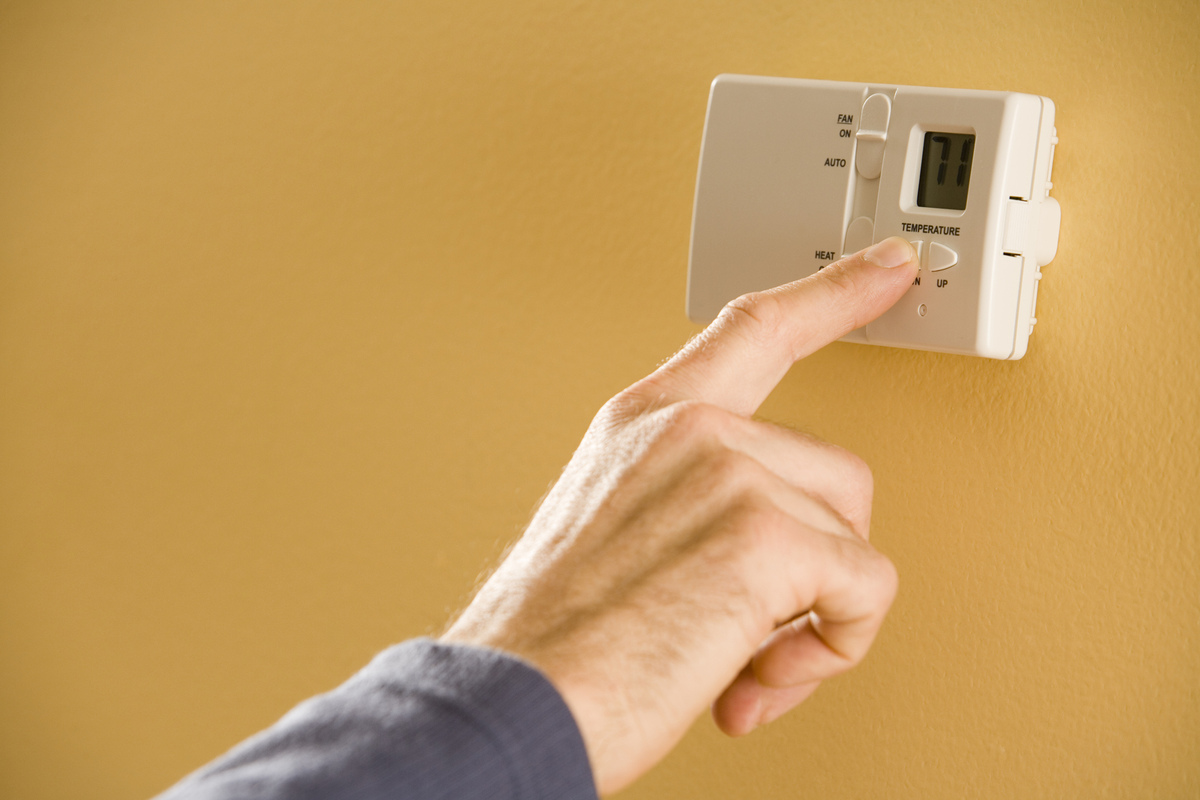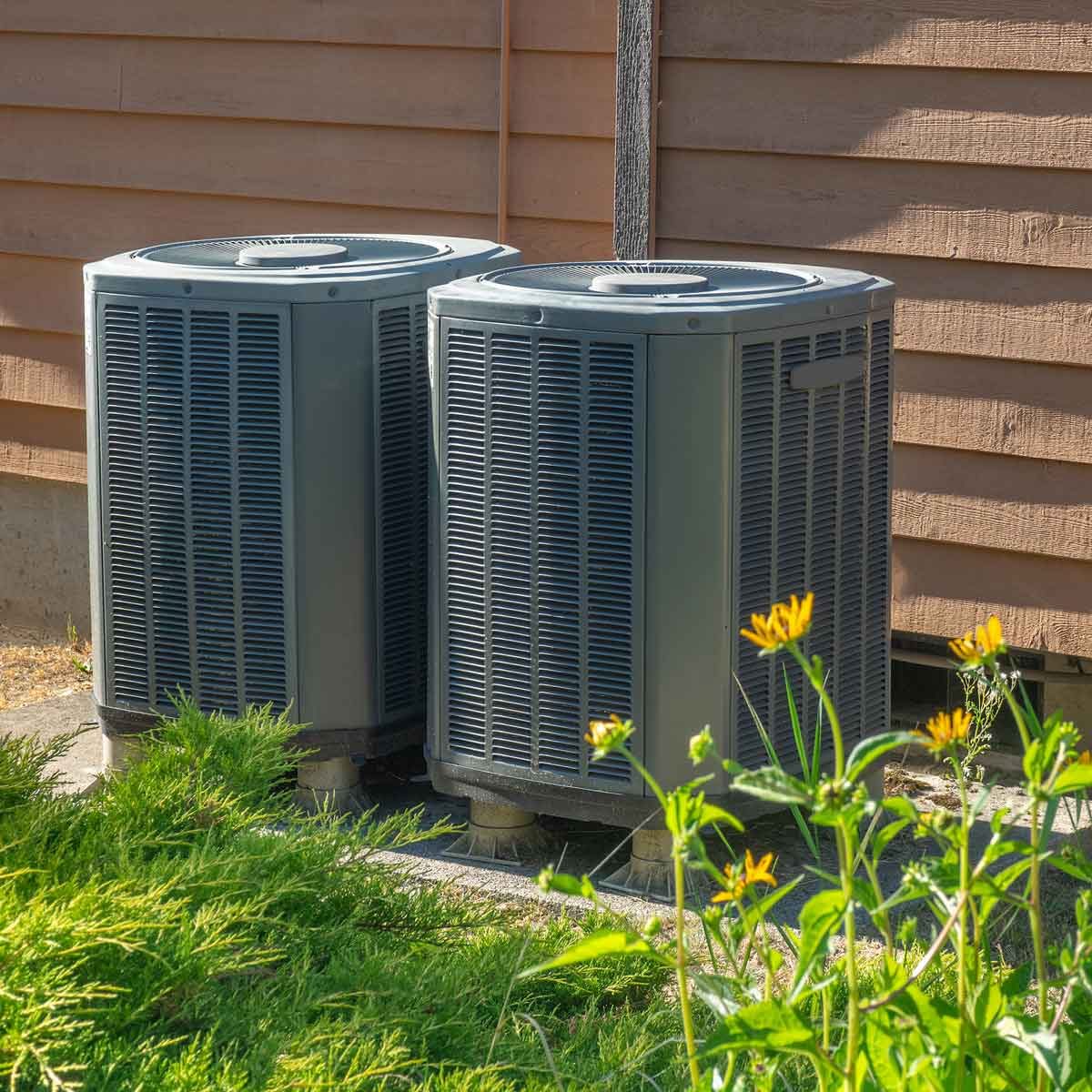Home>Home Maintenance>What Are The Different Types Of Air Conditioning System
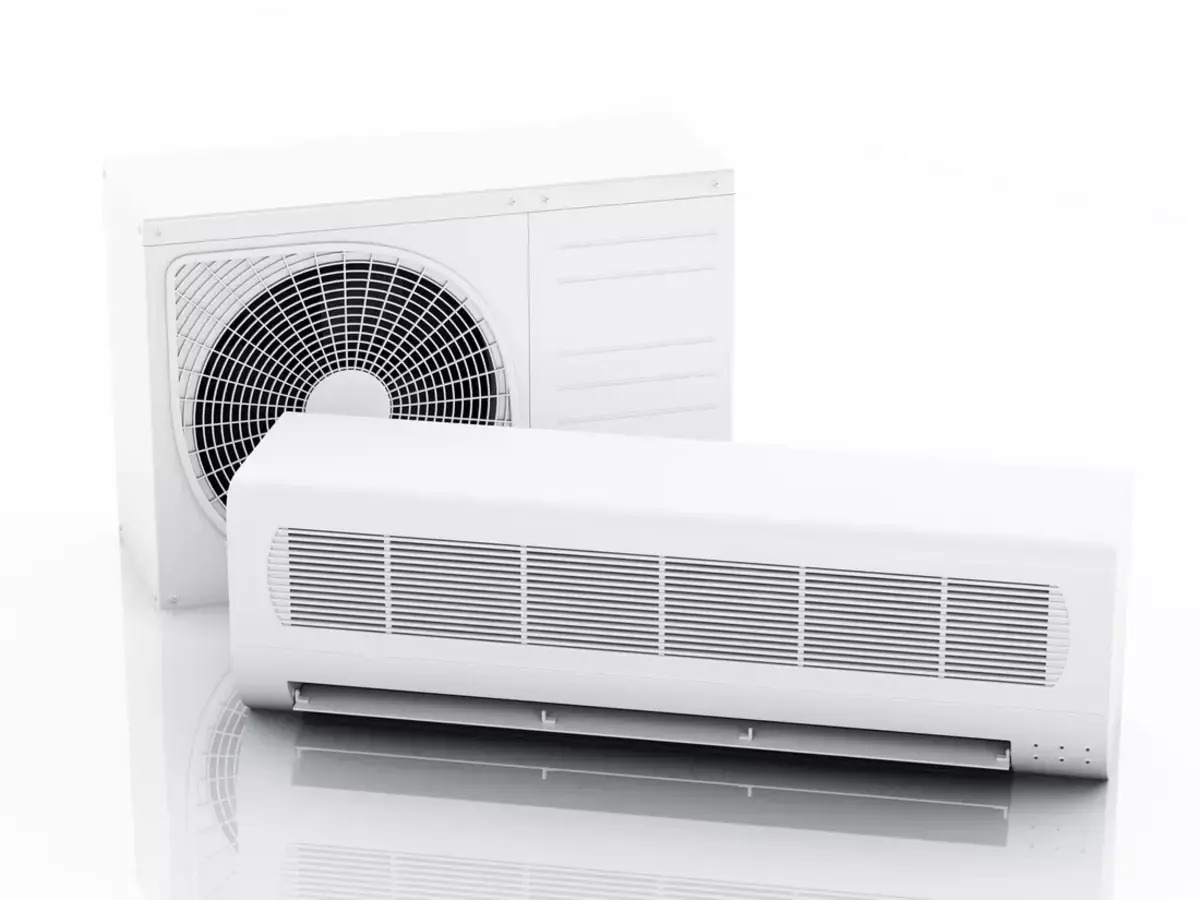

Home Maintenance
What Are The Different Types Of Air Conditioning System
Modified: March 6, 2024
Learn about the various types of air conditioning systems for your home maintenance needs. Stay cool and comfortable with efficient cooling solutions.
(Many of the links in this article redirect to a specific reviewed product. Your purchase of these products through affiliate links helps to generate commission for Storables.com, at no extra cost. Learn more)
Introduction
Welcome to the world of air conditioning systems! As the scorching summer heat approaches, it’s essential to have a reliable system to keep your home cool and comfortable. With several types of air conditioning systems available on the market, it can be overwhelming to choose the right one for your needs. In this article, we will explore the different types of air conditioning systems, their features, and the benefits they offer.
Having a clear understanding of the various types of air conditioning systems can help you make an informed decision when it comes to purchasing or selecting the appropriate system for your home. Each type has its own unique characteristics and benefits, so let’s dive in and explore!
Key Takeaways:
- Stay cool and save money with the right air conditioning system. Window units are budget-friendly, while split systems offer flexibility and energy savings. Consider your needs and climate for the best choice.
- Don’t sweat it! Choose the perfect air conditioning system for your space. From portable units for flexibility to central systems for whole-house cooling, there’s a solution for every need and budget.
Read more: What Are The Different Types Of Curtains
Window Air Conditioner
A window air conditioner is a popular and cost-effective option for cooling individual rooms or small spaces. As the name suggests, this type of air conditioner is designed to be installed in a window or a specially designed hole in an exterior wall.
Window air conditioners consist of a single unit that contains all the necessary components, including the compressor, condenser, and evaporator, within a compact housing. This self-contained unit is typically mounted on the window sill or secured in place with brackets.
One of the main advantages of window air conditioners is their ease of installation. They are relatively simple to set up, requiring minimal modifications to your home. Additionally, window air conditioners are an affordable cooling solution, making them an attractive option for budget-conscious homeowners.
These air conditioners are available in a variety of sizes and cooling capacities to suit different room sizes and cooling requirements. It’s essential to choose the right size unit for your space to ensure optimal cooling performance. Too small of a unit may struggle to cool the room adequately, while an oversized unit may consume excessive energy and lead to unnecessary cooling expenses.
Window air conditioners are operated using a control panel located on the unit itself or via a remote control. They typically offer adjustable fan speeds and temperature settings, allowing you to customize the cooling experience to your preferences.
Another advantage of window air conditioners is their ability to provide both cooling and dehumidification. They help remove excess moisture from the air, creating a more comfortable indoor environment.
However, it’s worth noting that window air conditioners may obstruct the view from your window and limit natural light. Additionally, they can be noisy due to the compressors and fans within the unit. As a result, they may not be the ideal choice for bedrooms or spaces where a quiet ambiance is desired.
In terms of maintenance, window air conditioners require regular cleaning and filter replacement to ensure efficient operation and air quality. It’s essential to clean the filters, condenser coils, and remove any debris or dust accumulation to prevent blockages and maintain optimal performance.
Overall, window air conditioners are a convenient and affordable cooling solution for individual rooms or small spaces. They are easy to install, provide cooling and dehumidification, and offer adjustable settings for personalized comfort. Consider your specific cooling needs and the size of the room when deciding if a window air conditioner is the right choice for you.
Split Air Conditioner
A split air conditioner, also known as a ductless mini-split system, offers more flexibility in cooling larger areas or multiple rooms in your home. This type of air conditioning system consists of two main components: an indoor unit and an outdoor unit.
The indoor unit of a split air conditioner is installed inside the room or area you want to cool. It typically mounts on the wall or ceiling and houses the evaporator coil, air filters, and a blower fan. The outdoor unit, on the other hand, contains the compressor, condenser coil, and a fan.
One of the primary advantages of a split air conditioner is the absence of ductwork. Instead of relying on ducts to distribute cool air, a split system uses refrigerant lines to connect the indoor and outdoor units. This eliminates the need for extensive ductwork installation and repair, making it a suitable option for homes that lack existing ducting systems.
The flexibility of split air conditioners allows for zoned cooling, meaning you can cool specific areas or rooms independently. Each indoor unit is connected to a dedicated outdoor unit, giving you precise control over the temperature in different areas of your home. This can result in energy savings by cooling only the areas you need, rather than wasting energy to cool the entire house.
Split air conditioners are known for their quiet operation since the noisy components, such as the compressor and condenser, are located outside. This makes them an excellent choice for bedrooms, living rooms, or any area where noise reduction is a priority.
In terms of installation, a split air conditioner typically requires professional installation due to the electrical and refrigerant line connections. A licensed HVAC technician can ensure the units are properly mounted, the refrigerant lines are correctly insulated, and the system is set up for optimal performance.
Split air conditioners often come with advanced features, such as programmable timers, remote control operation, and energy-saving modes. These features allow for convenient control of the system and help optimize energy consumption, resulting in potential cost savings on your utility bills.
Maintenance for split air conditioners typically involves cleaning or replacing the air filters regularly and ensuring the outdoor unit is free of debris or obstructions. It’s important to schedule professional maintenance at least once a year to check refrigerant levels, clean the coils, and ensure optimal performance.
Overall, split air conditioners offer flexibility, zoning capabilities, and quiet operation. They are an ideal choice for cooling larger areas or multiple rooms, especially in homes without existing ductwork. With their advanced features and energy efficiency, split air conditioners provide both comfort and cost savings.
Portable Air Conditioner
If you’re looking for a versatile cooling solution that can be easily moved from room to room, a portable air conditioner might be the perfect choice. As the name suggests, a portable air conditioner is designed to provide on-demand cooling wherever you need it.
Unlike window or split air conditioners, portable units do not require permanent installation or modifications to your home. They are compact and freestanding, equipped with wheels or casters for effortless mobility. This makes them a convenient option for renters or those who prefer a portable cooling solution.
A portable air conditioner consists of a single unit that houses all the necessary components, including the compressor, condenser, evaporator, and a fan. The unit is equipped with a flexible exhaust hose that vents hot air outside through a window or a specially designed opening in a wall.
One of the key advantages of a portable air conditioner is its flexibility. You can easily move it from room to room, allowing you to cool different areas as needed. This makes it a cost-effective option if you only need cooling in specific areas and don’t want to invest in multiple units for each room.
Portable air conditioners offer adjustable temperature settings and fan speeds, allowing you to customize your comfort level. Some models also have additional features like dehumidification and programmable timers, providing enhanced control and convenience.
However, it’s important to note that portable air conditioners may not be as efficient as window or split units. The exhaust hose used to vent hot air can result in some energy loss, reducing overall cooling efficiency. Additionally, portable units may generate more noise due to the proximity of the compressor and fan within a single housing.
Maintenance for portable air conditioners typically involves regular cleaning of the air filters to ensure optimal airflow and cooling performance. Some units also have self-evaporating technology, which minimizes the need for manual draining of the condensate water.
When choosing a portable air conditioner, consider the cooling capacity based on the size of the room you intend to cool. It’s essential to select a unit that has sufficient cooling power to effectively lower the temperature in your space.
Overall, portable air conditioners offer convenience, mobility, and flexibility. They are an excellent choice for those who require cooling in different areas or for temporary installations. While they may not be as efficient as window or split units, their portability and ease of use make them a popular choice for cooling small to medium-sized spaces.
Central Air Conditioning System
A central air conditioning system is a comprehensive cooling solution that provides efficient and effective cooling for larger homes or multiple rooms. This type of system utilizes a network of ducts to distribute cooled air throughout the entire house.
Central air conditioning systems typically consist of two main components: an outdoor unit, which contains the compressor and condenser, and an indoor unit, which houses the evaporator coil and blower fan. The outdoor unit is usually located outside the house, while the indoor unit is typically installed in the basement, attic, or utility closet.
The main advantage of a central air conditioning system is its ability to cool the entire house evenly. Cooled air is distributed through a network of ducts connected to each room, allowing for consistent temperature control throughout your home. This is especially beneficial for multi-story houses or larger living spaces.
Central air conditioning systems are often equipped with advanced features, such as programmable thermostats, which allow you to set desired temperatures for different times of the day. This not only enhances comfort but also helps save energy and reduce cooling costs by adjusting the temperature when you’re not at home or during hours of less activity.
Another advantage of central air conditioning is the ability to integrate additional components, such as air purifiers or humidifiers, into the system. This can improve indoor air quality by removing allergens, dust, and other pollutants, and maintaining optimal humidity levels.
Professional installation is typically required for central air conditioning systems as it involves designing and installing the ductwork to ensure proper airflow and cooling efficiency. HVAC professionals assess the size of your home and cooling requirements to determine the appropriate unit size and duct layout for optimal performance.
Maintenance for central air conditioning systems involves regular filter changes, cleaning of evaporator coils, and inspection of ductwork for any leaks or blockages. It is recommended to schedule annual professional maintenance to ensure all components are in good working condition and to address any potential issues before they become major problems.
While central air conditioning provides efficient and comprehensive cooling, it can be a significant investment. The cost of installation, ductwork, and equipment can be higher compared to other types of cooling systems. However, the long-term benefits of comfort, energy savings, and the overall value of the system make it a worthwhile investment for many homeowners.
Overall, a central air conditioning system offers whole-house cooling, even temperatures, and advanced features for enhanced comfort and energy efficiency. It is an excellent choice for larger homes or those looking for a comprehensive cooling solution for multiple rooms.
When choosing an air conditioning system, consider factors such as the size of the space, energy efficiency, and installation requirements. Different types include central air, ductless mini-split, window units, and portable AC units.
Read more: What Are The Different Types Of Stemware?
Ductless Mini-Split Air Conditioner
A ductless mini-split air conditioner, also known as a ductless heat pump, provides targeted cooling and heating for individual rooms or specific zones in your home. This type of system offers the benefits of central air conditioning without the need for extensive ductwork installation.
A ductless mini-split system consists of two main components: an outdoor unit, which houses the compressor and condenser, and one or more indoor units, which contain the evaporator coil and blower fan. The indoor and outdoor units are connected by refrigerant lines, allowing for the transfer of hot or cold air.
One of the primary advantages of a ductless mini-split air conditioner is its flexibility. Each indoor unit can be independently controlled, allowing you to set different temperatures for specific rooms or zones. This zoning capability provides personalized comfort and energy savings by only cooling or heating the spaces that are occupied.
Installation of a ductless mini-split system is relatively straightforward compared to traditional central air conditioning units. Since it does not require ductwork, installation is less invasive and disruptive to your home. The indoor units are typically mounted on a wall or ceiling, and the outdoor unit can be placed on the ground or mounted on a bracket outside.
Another advantage of ductless mini-split systems is their energy efficiency. Unlike central air conditioning systems that may experience energy loss through ductwork, ductless systems deliver conditioned air directly to the desired space. This can result in higher energy savings and lower utility bills.
In addition to cooling, many ductless mini-split systems offer heating capabilities. This makes them suitable for year-round use, providing both cooling during the summer and heating during colder months. The ability to switch between cooling and heating modes allows for optimal comfort throughout the year.
Ductless mini-split air conditioners are known for their quiet operation. The indoor units are designed with noise reduction technology, ensuring minimal disruption in your living space. This makes them suitable for bedrooms, offices, or any area where a quiet environment is desired.
Maintenance for a ductless mini-split system is relatively low compared to other types of air conditioners. It primarily involves cleaning or replacing air filters on a regular basis to ensure proper airflow and efficiency. It’s also important to keep the outdoor unit free from debris and maintain the refrigerant levels as recommended by the manufacturer.
Overall, a ductless mini-split air conditioner offers flexibility, energy efficiency, and personalized comfort. Whether you want to cool or heat specific areas of your home or have limited space for ductwork, a ductless mini-split system provides a reliable and efficient solution for your cooling and heating needs.
Packaged Terminal Air Conditioner
A packaged terminal air conditioner (PTAC) is a self-contained cooling and heating system commonly used in hotels, apartments, dormitories, and other commercial or residential spaces. PTAC units are installed through an exterior wall and provide individual temperature control for each room.
A PTAC unit consists of two main components: an indoor unit and an outdoor unit. The indoor unit houses the evaporator coil, blower fan, and heating elements, while the outdoor unit contains the compressor and condenser coil. These components work together to provide both cooling and heating capabilities.
One of the primary advantages of a PTAC unit is its ease of installation. Since it is a self-contained system, it can be easily mounted through an exterior wall without the need for extensive ductwork. This makes it a convenient option for retrofitting existing spaces or adding individual temperature control to specific rooms.
PTAC units offer individual temperature control, allowing occupants to adjust the temperature to their desired comfort level. This is especially important in commercial settings like hotels, where each room may have different heating and cooling requirements.
In addition to cooling, PTAC units also provide heating capabilities. They are equipped with electric heating elements that can supplement the primary heating system or provide heat during colder months. This versatility makes PTAC units suitable for year-round use.
With their self-contained design, PTAC units offer independent control of each room, providing energy savings by only cooling or heating occupied spaces. This can lead to reduced energy consumption and lower utility bills, especially in larger commercial buildings with varying occupancy levels.
PTAC units are typically operated using a built-in control panel located on the unit itself or with a remote control. These control systems allow for easy adjustment of temperature settings, fan speeds, and operating modes.
Maintenance for PTAC units involves regular cleaning of the air filters and regular inspection of the unit’s components. It’s important to clean or replace the air filters to maintain proper airflow and efficiency. Professional maintenance may be required to inspect the unit’s overall performance and address any issues that may affect its functionality.
Overall, a packaged terminal air conditioner provides a self-contained and efficient cooling and heating solution for individual rooms or spaces. With their ease of installation, individual temperature control, and energy-saving capabilities, PTAC units are a popular choice in commercial settings and residential spaces that require zoned climate control.
Evaporative Cooler
An evaporative cooler, also known as a swamp cooler, is an energy-efficient and eco-friendly cooling solution commonly used in dry and arid climates. Instead of using refrigerants and compressors like traditional air conditioners, evaporative coolers harness the natural process of evaporation to cool the air.
The main components of an evaporative cooler include a water reservoir, a fan, and a set of cooling pads. The cooling pads are made of a porous material that absorbs water from the reservoir. As the hot, dry air from outside is drawn through the cooling pads by the fan, the water evaporates, causing a drop in temperature, and the cooler air is circulated into the room.
One of the primary advantages of an evaporative cooler is its energy efficiency. Unlike air conditioners that consume a significant amount of electricity, evaporative coolers use only a fraction of the energy, making them a cost-effective cooling option. They operate on the principle of evaporation, which requires less electricity compared to the refrigeration process.
In addition to being energy-efficient, evaporative coolers also offer the benefit of natural humidity. As the air passes through the wet cooling pads, moisture is added, improving the humidity level in the room. This can be particularly beneficial in dry climates where low humidity can cause discomfort and respiratory issues.
Evaporative coolers are relatively easy to install, with various options available, such as window-mounted units or portable units that can be easily moved between rooms. They do not require extensive ductwork or refrigerant line installation, making them a convenient cooling option for both residential and commercial spaces.
It’s important to note that evaporative coolers work best in hot and dry climates. In areas with high humidity, the cooling effect may be limited. Additionally, evaporative coolers require a constant supply of water, as the water in the reservoir needs to be replenished regularly to ensure efficient cooling.
Maintenance for evaporative coolers involves regular cleaning of the cooling pads and the water reservoir to prevent the growth of mold, bacteria, or mineral deposits. Additionally, it’s essential to regularly check and replace any pads that have become worn out or damaged to maintain optimal cooling performance.
Overall, evaporative coolers offer an energy-efficient and environmentally friendly alternative to traditional air conditioning systems, particularly in hot and dry climates. With their natural cooling process and added humidity benefits, they provide a refreshing and cost-effective cooling solution for homes, offices, and other spaces.
Conclusion
Choosing the right air conditioning system for your home or commercial space is essential to ensure optimal comfort and energy efficiency. With a variety of options available, it’s important to understand the different types of air conditioning systems and their unique features.
Window air conditioners offer a convenient and budget-friendly solution for cooling individual rooms or small spaces. They are easy to install and provide adjustable settings for personalized comfort. However, they may obstruct views and can be noisy.
Split air conditioners, or ductless mini-split systems, provide flexibility and zoning capabilities for cooling larger areas or multiple rooms. They offer efficient cooling, quiet operation, and the option for year-round heating. Professional installation is required, but they offer personalized comfort and energy savings.
Portable air conditioners are a versatile cooling option that can be easily moved from room to room. They are ideal for small to medium-sized spaces and provide flexibility without the need for permanent installation. However, they may not be as efficient as other types of systems and can generate more noise.
Central air conditioning systems offer whole-house cooling with even temperatures. They require ductwork installation but provide precise temperature control and advanced features. They are ideal for larger homes but can be a significant investment.
Packaged terminal air conditioners, commonly used in commercial settings, provide individual temperature control for each room. They are easy to install, offer energy savings, and have independent control for personalized comfort.
Evaporative coolers, or swamp coolers, provide an eco-friendly and energy-efficient cooling solution for dry climates. They offer natural humidity and cost-effective cooling, but their effectiveness may be limited in areas with high humidity.
Ultimately, the choice of air conditioning system depends on your specific needs, budget, and the climate in which you reside. Consider the size of your space, cooling requirements, energy efficiency, and installation constraints when making your decision.
Remember to properly maintain and service your chosen air conditioning system to ensure optimal performance and longevity. Regular cleaning, filter replacement, and professional maintenance can go a long way in keeping your system running efficiently.
By understanding the different types of air conditioning systems and their benefits, you can make an informed decision and create a cool and comfortable environment for your home or commercial space.
Frequently Asked Questions about What Are The Different Types Of Air Conditioning System
Was this page helpful?
At Storables.com, we guarantee accurate and reliable information. Our content, validated by Expert Board Contributors, is crafted following stringent Editorial Policies. We're committed to providing you with well-researched, expert-backed insights for all your informational needs.
